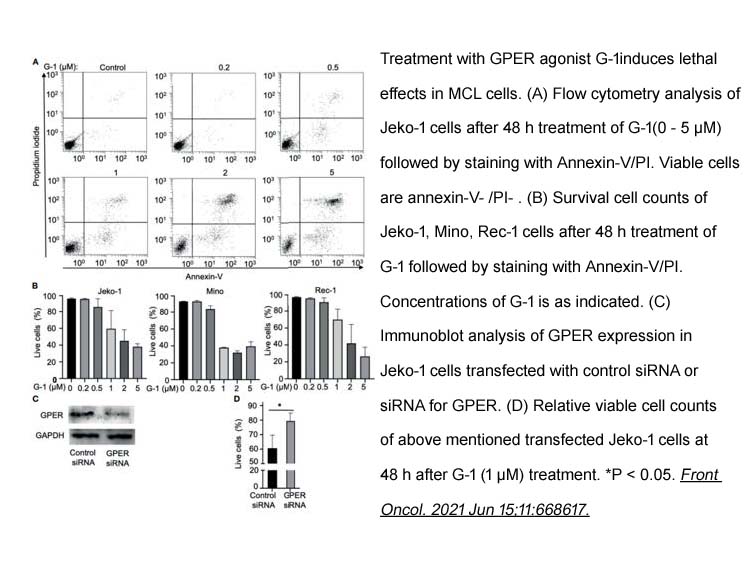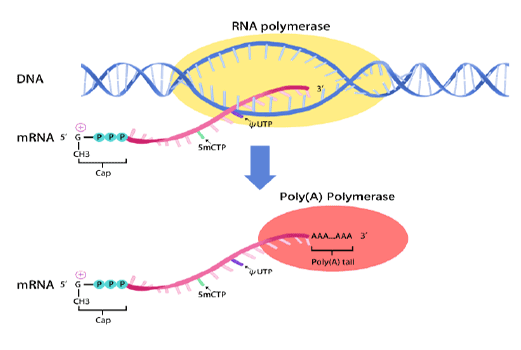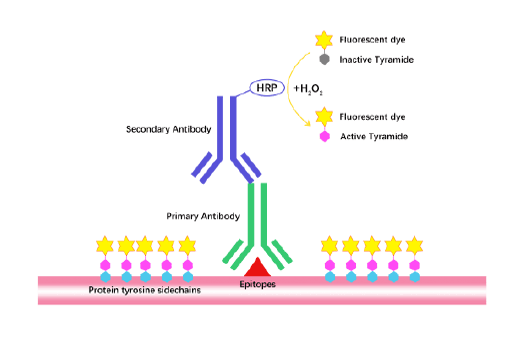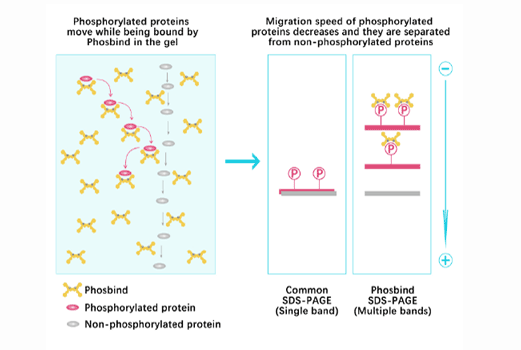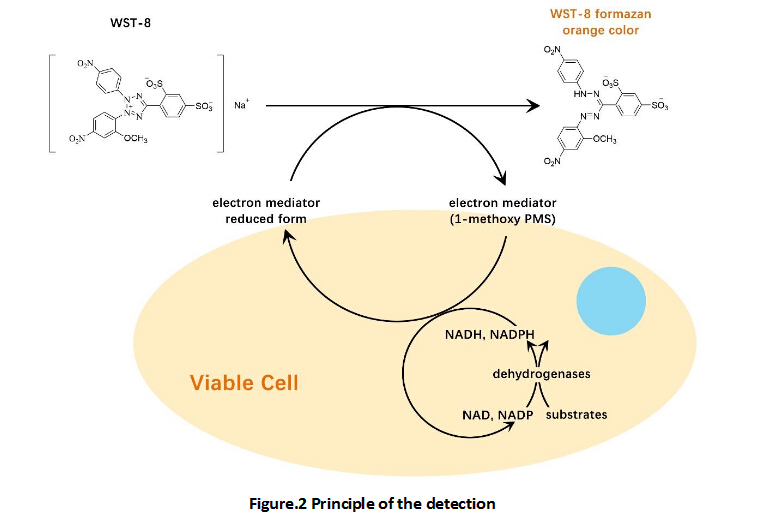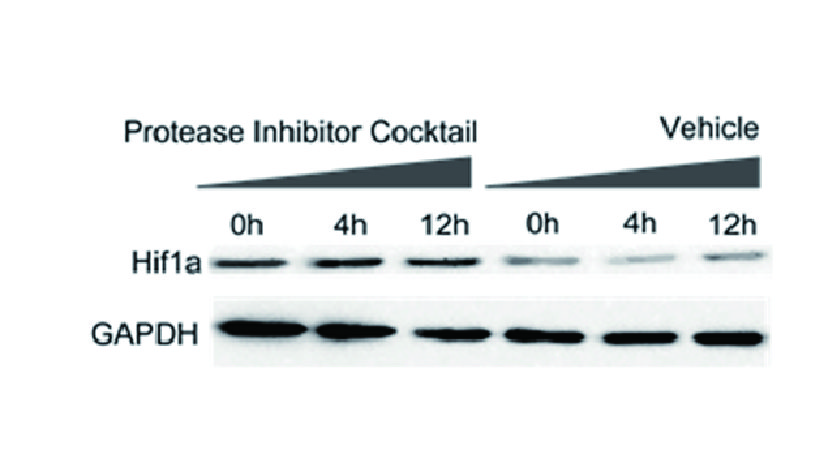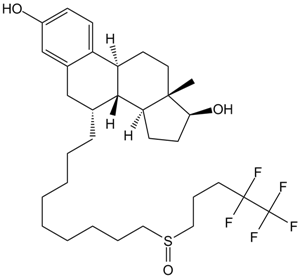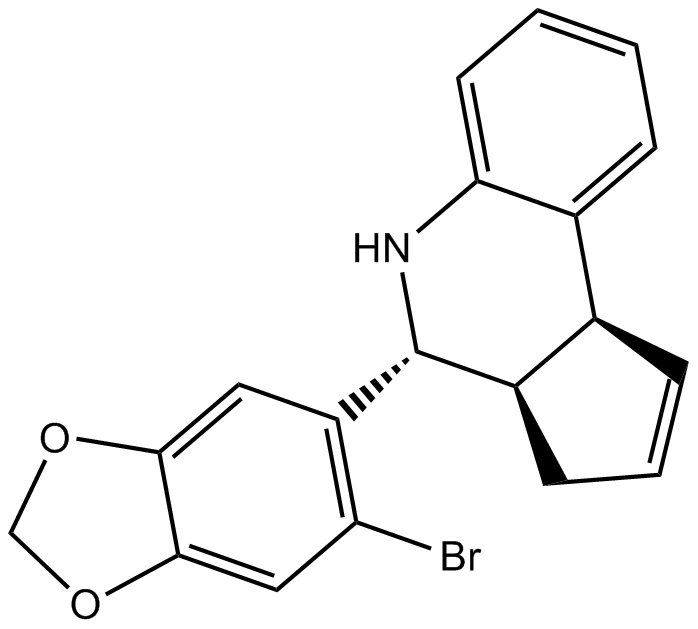G-1
G-1 (CAS 881639-98-1) is a selective agonist for the G protein-coupled receptor GPR30. GPR30, an integral membrane receptor localized within the endoplasmic reticulum, binds estradiol and aldosterone and activates various intracellular signaling cascades. G-1 binds selectively to GPR30 with a Ki of approximately 11 nM, while exhibiting minimal affinity to estrogen receptors ERα and ERβ even at micromolar concentrations. Activation of GPR30 by G-1 elevates intracellular calcium concentrations (EC50 = 2 nM) and induces PI3K-dependent nuclear accumulation of PIP3. In animal models, G-1 treatment mitigates myocardial fibrosis, modulates β-adrenoceptor expression, and improves cardiac function, suggesting utility in cardiovascular and endocrine research.
- 1. Junita Desouza, Rushda Khan, Siddhanath Metkari. "G - protein coupled estrogen receptor 1 (GPER1): A potential target for chemoprevention of prostate cancer." Biochim Biophys Acta Mol Basis Dis. 2025 Apr;1871(4):167740. PMID: 39988180
- 2. Qing Chen, Hui Wu, et al. "GPR30 in spinal cholecystokinin-positive neurons modulates neuropathic pain via mediating descending facilitation." bioRxiv. September 26, 2024
- 3. Lang Zeng, Xuanzhen Lu, et al. "GPER1/ACACB are potential target genes associated with intracranial aneurysm and vascular endothelial cell senescence." Research Square. 19 Sep, 2024
- 4. Guanyu Chen, Honghui Zeng, et al. "Activation of G protein coupled estrogen receptor prevents chemotherapy-induced intestinal mucositis by inhibiting the DNA damage in crypt cell in an extracellular signal-regulated kinase 1- and 2- dependent manner." Cell Death Dis. 2021 Oct 30;12(11):1034 PMID: 34718327
- 5. Linhao Xu, Yizhou Xu, et al. "Tanshinone IIA attenuates renal injury during hypothermic preservation via the MEK/ERK1/2/GSK-3β pathway." BMC Complement Med Ther. 2021 Oct 8;21(1):257 PMID: 34625061
- 6. Dan Huang, Xindong Wang, et al. "Bazi Bushen Capsule Alleviates Post-Menopausal Atherosclerosis via GPER1-Dependent Anti-Inflammatory and Anti-Apoptotic Effects." Front Pharmacol. 2021 Jun 25;12:658998 PMID: 34248622
- 7. Lixia Zhou, Tenghua Yu, et al. "G Protein-Coupled Estrogen Receptor Agonist G-1 Inhibits Mantle Cell Lymphoma Growth in Preclinical Models." Front Oncol. 2021 Jun 15;11:668617 PMID: 34211844
- 8. Peng Wang, Li-Na Jiang, et al. "Estradiol-induced inhibition of endoplasmic reticulum stress normalizes splenic CD4 + T lymphocytes following hemorrhagic shock." Sci Rep. 2021 Apr 5;11(1):7508 PMID: 33820957
- 9. Xiaoyu Hang, Zhenyu Zhang, et al. "Estrogen Protects Articular Cartilage by Downregulating ASIC1a in Rheumatoid Arthritis." J Inflamm Res. 2021 Mar 12;14:843-858 PMID: 33737825
- 10. Zhong J, Ge HF, et al. "G Protein-Coupled Estrogen Receptor 1 Negatively Regulates the Proliferation of Mouse-Derived Neural Stem/Progenitor Cells via Extracellular Signal-regulated Kinase Pathway." Brain Res. 2019 Feb 21. pii: S0006-8993(19)30108-8 PMID: 30797747
- 11. Chang Y, Han Z, et al. "G protein-coupled estrogen receptor activation improves contractile and diastolic functions in rat renal interlobular artery to protect against renal ischemia reperfusion injury." Biomed Pharmacother. 2019 Apr;112:108666 PMID: 30784936
- 12. Chai S, Liu K, et al. "Activation of G protein-coupled estrogen receptor protects intestine from ischemia/reperfusion injury in mice by protecting the crypt cell proliferation." Clin Sci (Lond). 2019 Feb 8;133(3):449-464 PMID: 30705108
- 13. Wu Y, Feng D, et al. "Downregulation of G protein coupled receptor 30 in the hippocampus attenuates the neuroprotection of estrogen in the critical period hypothesis." Mol Med Rep. 2018 Apr;17(4):5716-5725 PMID: 29484405
| Physical Appearance | A crystalline solid |
| Storage | Store at -20°C |
| M.Wt | 412.28 |
| Cas No. | 881639-98-1 |
| Formula | C21H18BrNO3 |
| Solubility | ≥41.2 mg/mL in DMSO; insoluble in H2O; insoluble in EtOH |
| Chemical Name | 1-((3aS,4R,9bR)-4-(6-bromobenzo[d][1,3]dioxol-5-yl)-3a,4,5,9b-tetrahydro-3H-cyclopenta[c]quinolin-8-yl)ethan-1-one |
| SDF | Download SDF |
| Canonical SMILES | CC(c(cc1)cc([C@@H]2C=CC[C@@H]22)c1N[C@H]2c(cc1OCOc1c1)c1Br)=O |
| Shipping Condition | Small Molecules with Blue Ice, Modified Nucleotides with Dry Ice. |
| General tips | We do not recommend long-term storage for the solution, please use it up soon. |
| Cell experiment [1]: | |
|
Cell lines |
SKBr3 breast cancer cells and MCF7 cells |
|
Preparation method |
The solubility of this compound in DMSO is > 10 mM. General tips for obtaining a higher concentration: Please warm the tube at 37 °C for 10 minutes and/or shake it in the ultrasonic bath for a while. Stock solution can be stored below - 20 °C for several months. |
|
Reacting condition |
10 nM |
|
Applications |
In both SKBr3 cells expressing only GPR30 and MCF7 cells expressing GPR30 and ERα/β, G-1 induced nuclear accumulation of PIP3. Besides, G-1 inhibited migration of SKBr3 and MCF7 cells with IC50 values of 0.7 nM and 1.6 nM, respectively. Therefore, G-1 could selectively bind to GPR30 in the same cell where ERs were present, activating endogenously expressed GPR30 and resulting in various physiologic responses, such as inhibition of cell migration. |
| Animal experiment [2]: | |
|
Animal models |
Female Sprague–Dawley rats with bilateral ovariectomy and heart failure |
|
Dosage form |
120 μg/kg; for 14 days |
|
Applications |
In female Sprague-Dawley rats with bilateral ovariectomy and heart failure, G-1 treatment reduced concentration of brain natriuretic peptide, inhibited cardiac fibrosis and promoted heart contraction. G-1 attenuated heart failure through chronic activation of the GPR30 which was mediated by normalizing the expression of β1-AR and up-regulating the expression of β2-AR. |
|
Other notes |
Please test the solubility of all compounds indoor, and the actual solubility may slightly differ with the theoretical value. This is caused by an experimental system error and it is normal. |
|
References: [1]. Bologa CG, Revankar CM, Young SM, et al. Virtual and biomolecular screening converge on a selective agonist for GPR30. Nat Chem Biol, 2006, 2(4): 207-212. [2]. Kang S, Liu Y, Sun D, et al. Chronic activation of the G protein-coupled receptor 30 with agonist G-1 attenuates heart failure. PLoS One, 2012, 7(10): e48185. |
|
Quality Control & MSDS
- View current batch:
Chemical structure
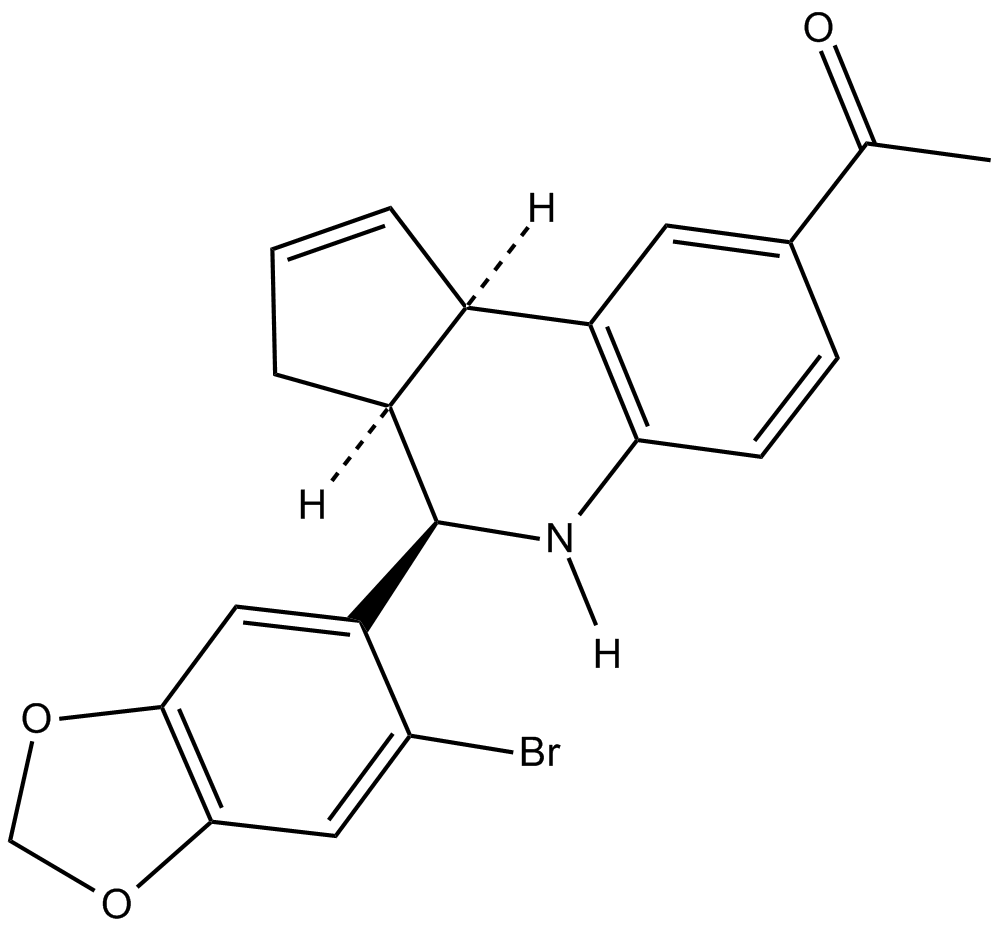
Related Biological Data
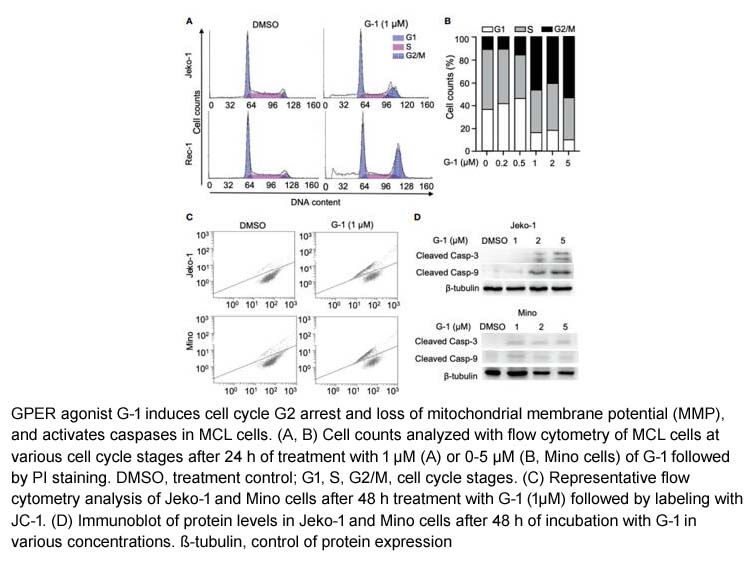
Related Biological Data
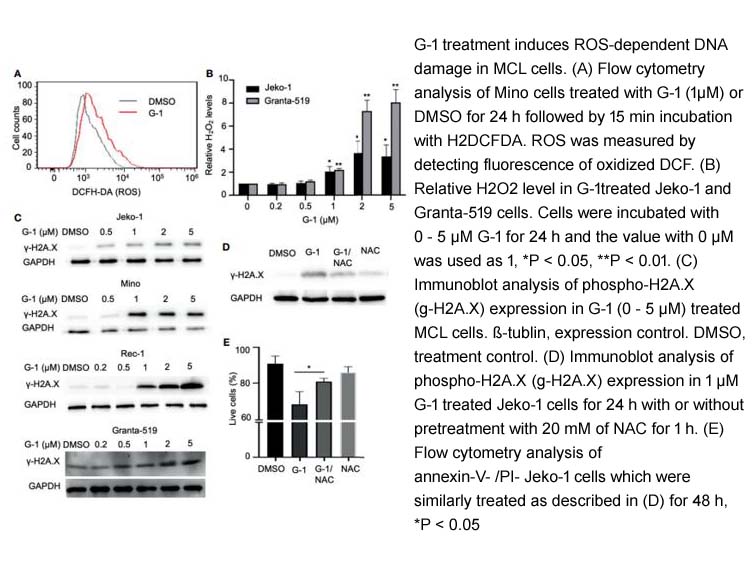
Related Biological Data
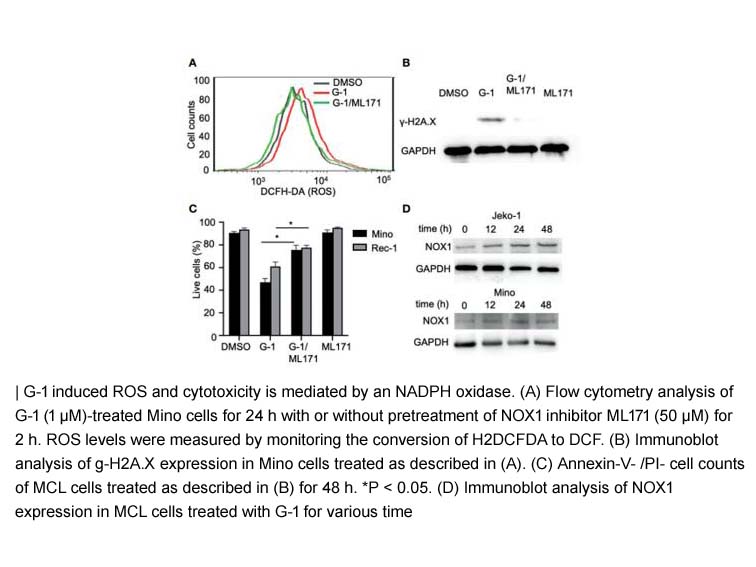
Related Biological Data
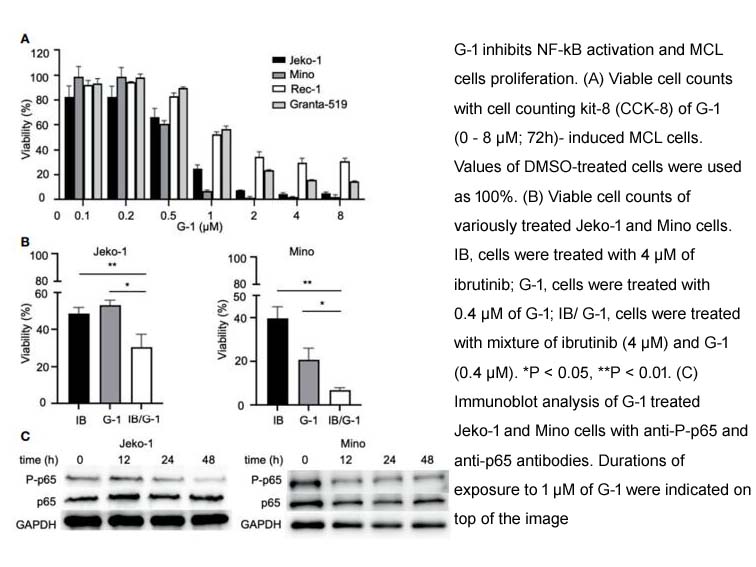
Related Biological Data
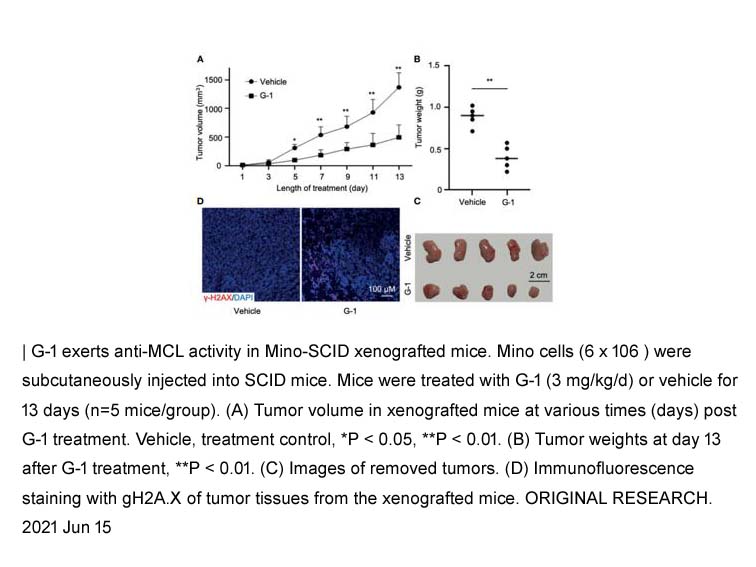
Related Biological Data
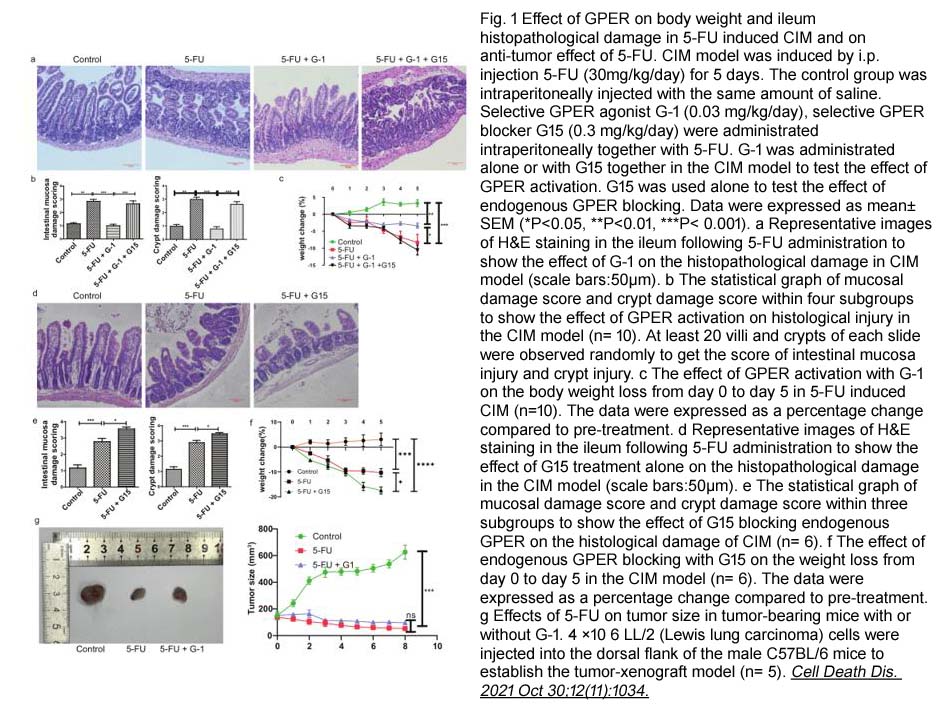
Related Biological Data
